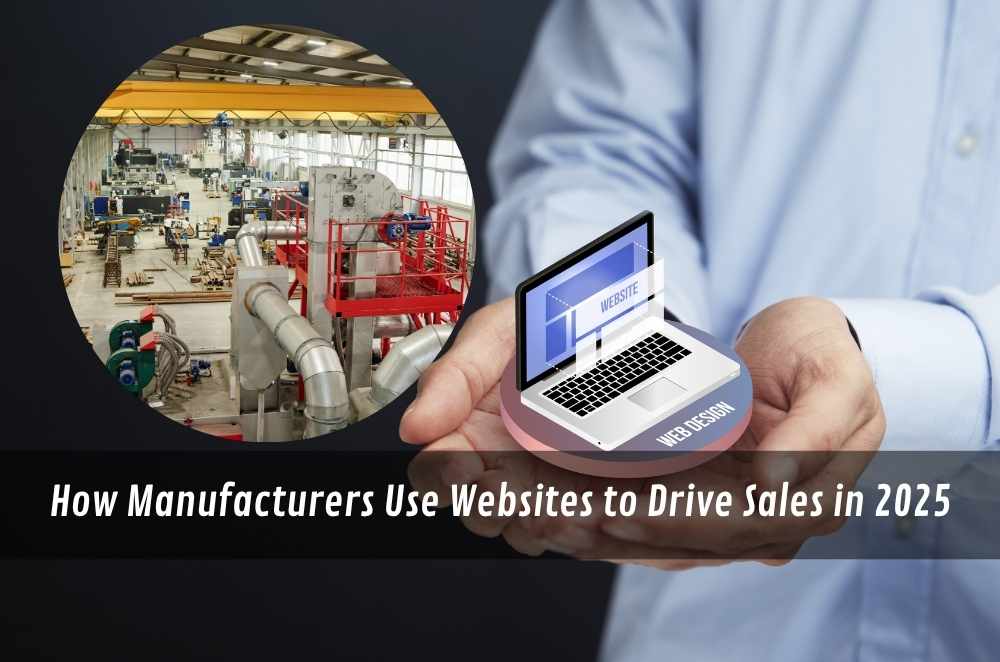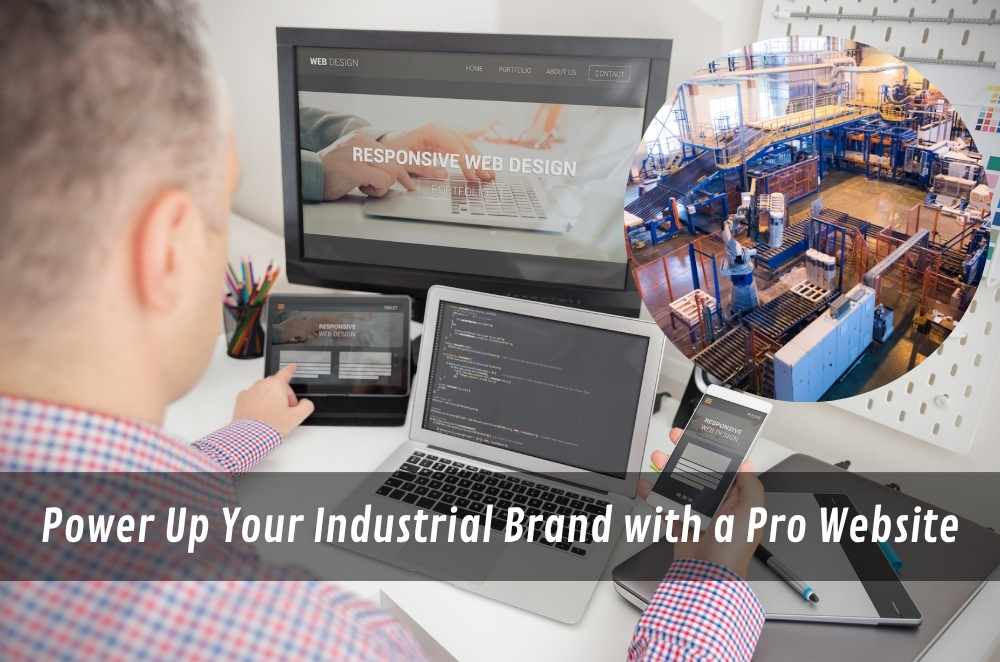
The old “brochure site” won’t cut it in 2025. Buyers want spec sheets at 7 am, lead times at a glance by lunch, and a quote in their inbox before the close of business. The manufacturers winning RFQs now treat the website like a sales rep that never clocks off. If you’re mapping a refresh, start by benchmarking a modern website for manufacturers against how your buyers actually research—then wire the whole thing to capture demand, not just clicks.
What B2B buyers expect (and how your site should answer)
Procurement teams don’t browse; they search with intent. Your site has seconds to prove fit and reduce friction.
Clear “Can you make this?” signals: Industries, materials, tolerances, certifications (ISO, NATA) above the fold.
Specs without a login wall: Datasheets, CAD/STEP files, and tolerances downloadable per SKU.
Lead times and MOQs: Ranges beat guesswork—“8–12 business days” is better than radio silence.
Fast paths to quote: Sticky RFQ, email capture by SKU, and a one-page “upload drawings” form.
Proof that you deliver: Case studies with baseline → problem → outcome, plus photos from the shop floor.
On a recent build for a metal fabricator, we swapped a generic “Contact Us” page for a product-level “Get a Quote” with material dropdowns, thickness, and finish. RFQs rose 42% in six weeks—not because traffic spiked, but because qualified buyers stopped bouncing.
Structure your catalogue like a sales conversation
Manufacturing catalogues can drown people. Group SKUs by application (“Food-grade conveyors”, “Architectural perforated panels”), then let users filter by material, finish, thickness, and standards. Each product page should show:
Spec summary: Bulleted headline specs and tolerances
Downloads: PDF datasheet, CAD pack, handling guide
Lead time & MOQ guidance: With caveats for customisation
CTA continuity: “Add to RFQ” that persists as they browse
If your ERP can’t expose live stock, at least surface typical lead-time bands and a “Need it sooner?” path to discuss expedited runs.
UX choices that move RFQs (not just page views)
Two things are non-negotiable this year: speed and accessibility. A slow site is a quiet site, and inaccessible pages shut out decision-makers (and expose you to compliance risk). For inclusive design patterns you can point your devs to, anchor your brief around an industrial website that meets the Australian Government’s accessibility standard (WCAG 2.1). Plain-language headings, keyboard-friendly forms, adequate contrast, captions for demo videos—these help humans and search engines.
Performance-wise: compress those hero images, lazy-load galleries, and ditch autoplay sliders. On one composite manufacturer’s site, moving from a bloated theme to a lean build cut Largest Contentful Paint from 4.9s to 1.8s—and quote starts climbed almost immediately.
Content that proves capability (and calms risk)
Engineers and buyers care about risk more than adjectives. Build a content spine that reassures:
Process pages: CNC, laser, powder coat, QA—show the line, show the gauges.
Quality & compliance: Certificates, test methods, inspection regimes.
Design notes: Tolerance guides, common pitfalls, printable checklists.
Case studies: Before/after, constraints, measurable outcomes (weight reduced by X%, waste cut by Y%).
Factory updates: New machines, new materials, new finishes—short posts with real photos.
Use a consistent template: who the client was (industry), what the constraint was (budget, weight, timeframe), how you solved it, and what changed.
Forms that don’t make buyers swear
RFQ friction kills deals. Keep the form under a minute:
Essentials only: contact, company, phone/email, project notes, upload drawings/photos.
Make fields context-aware: if “Material = Stainless”, reveal finish choices.
Auto-assign submissions to the right estimator via tags (material, region, order size).
Confirm instantly with a human ETA (“We’ll review and reply within one business day”).
Then follow with a short, plain-text email the same day. Speed = trust.
Connect the stack: ERP, CRM, and production
The website can’t be a silo. Pipe RFQs into your CRM with line-item detail (material, finish, quantity), then push accepted quotes into ERP for scheduling. Even a lightweight stack (web form → Zapier → CRM) beats inbox triage. At minimum:
Lead routing and reminders so no quote sits stale.
Analytics on RFQ sources to double down on what works (organic/spec page vs. paid).
Status updates triggered from ERP milestones (“Order cut”, “Powder coat in progress”, “Dispatch booked”).
On a plastics job last quarter, we added a quoting pipeline step, “Awaiting drawings”. Automated nudges recovered 19% of stalled RFQs—buyers often just forgot to attach the file.
SEO that serves engineers (and wins the long tail)
Skip vanity keywords; target tasks. Title tags like “316 stainless perforated panels – open area calculator & RFQ” beat “Quality Manufacturer Since 1998”. Sprinkle schema (Product, Organisation, FAQ), embed calculators (weight, open area, bend allowances), and write “how to spec” posts that match search intent.
If you’re building a content hub, an internal explainer such as industrial website design can unpack layout patterns (RFQ-first nav, in-page specs, sticky CTAs) and performance tactics without repeating this post.
Photography and video: Show the work, not just the words
Buyers can sniff stock photos. Use real machines, real staff, real parts. Short clips—sheet metal folding, powder-coat line, tensile testing—outperform glossy brand films for manufacturers because they prove capacity. Caption every clip (accessibility, again), and keep files lean.
One trick I love: mount a phone above the inspection bench for time-lapse QA. It’s mesmerising, quick to edit, and tells the “we check everything” story without a single adjective.
Pricing transparency without boxing yourself in
No manufacturer wants to be locked to a price on a web page. So publish ranges and drivers instead. E.g., “Typical lead time 8–12 business days; expedited options on request. Pricing varies with material, thickness, finish, and tolerances.” Then invite drawings. This reduces tyre-kickers and arms serious buyers with the right expectations.
(If your host wants to cover the dollars deeply,) Add a companion piece 100+ words away from the internal link above—use manufacturing website design to reference best-practice examples and external benchmarks.
What to measure weekly (so the site keeps selling)
RFQs started & completed (split by product family)
Quote acceptance rate & time to first response
Top spec downloads & case study views
Search terms driving RFQs (not just traffic)
Page speed & Core Web Vitals after content changes
Review in a short stand-up: what moved, what broke, what to test next (shorter RFQ? video on a spec page? case study in the hero?).
Launch checklist for a manufacturing site
Before you ship the redesign:
Crawl the site for broken links and missing alt text.
Test forms on mobile with and without attachments.
Run an accessibility pass (contrast, focus states, skip links).
Check download sizes; trim obese PDFs.
Verify thank-you pages fire goals in analytics.
Re-submit sitemaps; watch for indexing errors.
Train sales on how leads appear and who owns the first reply.
Final thoughts
Manufacturing sites that sell in 2025 feel like calm, capable sales reps: quick with specs, clear on lead times, and frictionless on quotes. Keep the catalogue structured like a conversation, make RFQs painless, and wire the stack so nothing drops between web form and workshop. Build on accessible, fast pages using the industrial website standard, and let case studies and process photos carry the persuasion. If you’re starting from scratch, benchmark against a modern website for manufacturers, then iterate weekly on the metrics that matter—RFQs in, quotes out, orders booked.









Write a comment ...